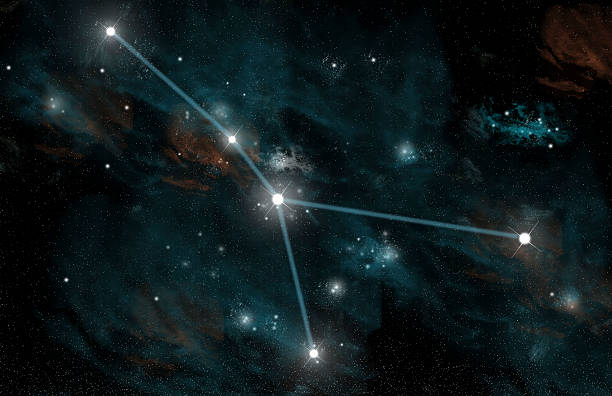Have you ever gazed up at the night sky and been captivated by the twinkling tapestry of stars? Among the celestial tapestry lies a faint, yet captivating constellation named Cancer – a celestial crab scuttling across the heavens. While it may not scream for attention like its flashier neighbors, Cancer holds a treasure trove of secrets waiting to be unearthed.
Embark on a cosmic journey with us as we peel back the layers of this enigmatic constellation. From its ancient mythology to its sparkling gems, we’ll guide you through the wonders of Cancer. Prepare to learn how to spot it in the night sky, unravel its fascinating origins, and even delve into its scientific significance and astrological associations.
So, whether you’re a seasoned stargazer or just beginning your celestial exploration, join us on this adventure through the Cancer constellation. This faint crab might just surprise you with its hidden depths and captivating charm!
Understanding the Cancer Constellation
While Cancer may not boast the brightest stars or the most obvious shape, its understated charm lies in its subtle beauty and intriguing celestial inhabitants. To truly appreciate this enigmatic constellation, let’s embark on a celestial cartography voyage and map its fascinating physical characteristics.
Location, Location, Location
Picture yourself sprawled out on a cosmic meadow, gazing directly north. Look roughly halfway between the dazzling twins of Gemini to the west and the majestic lion of Leo to the east. There, nestled amidst the starry expanse, you’ll find Cancer, our shy crustacean. Due to its northern location, it’s most visible during the spring and early summer months in the Northern Hemisphere, and autumn in the Southern Hemisphere.
Size Matters, or Does It?
Though not the largest constellation, Cancer occupies a respectable 506 square degrees of celestial real estate. To put it in perspective, imagine it covering an area roughly 10 times the size of the full moon! Despite its decent size, its stars tend to be fainter, making it more of a challenge to spot for untrained eyes.
Charting the Celestial Crab
While Cancer’s crab-like form might be difficult to discern with the naked eye, its brightest stars offer celestial breadcrumbs to guide our exploration. Beta Cancri, also known as Al Tarf (“the end” in Arabic), shines at a magnitude of 3.5, marking the tip of the crab’s southern claw. Acubens, another prominent star, sits near the center of the constellation, resembling the crab’s heart. Finally, Altarf, located at the base of the northern claw, completes the celestial crustacean’s outline.
Beyond the Stars: Deep-Sky Delights
Cancer’s treasures extend beyond its individual stars. Nestled within its embrace lies the Beehive Cluster, also known as Praesepe (Latin for “manger”). This dazzling open cluster, visible even to the naked eye on a clear night, boasts over 1,000 stars swirling together in a cosmic dance. Through binoculars or a telescope, the Beehive reveals its true splendor, showcasing a breathtaking tapestry of stars of varying colors and brightness.
Unraveling the Mysteries: Messier Marvels
For the avid stargazer, Cancer holds even more hidden gems. This constellation is home to several Messier objects, celestial beauties cataloged by French astronomer Charles Messier. Messier 44, nestled within the Beehive Cluster, is a treat for both beginners and experienced observers. Other Messier objects, like the faint planetary nebula Messier 67 and the globular cluster Messier 64, offer additional celestial targets for those seeking a deeper exploration of Cancer’s secrets.
So, the next time you gaze up at the night sky, don’t dismiss the faint glimmer of Cancer. This cosmic crab holds a wealth of physical wonders, from its constellation-defining stars to the dazzling Beehive Cluster and hidden Messier objects.
ALSO READ: The Dangers of Space: How Astronauts Prepare for the Risks of Space Travel
Mythical Origins
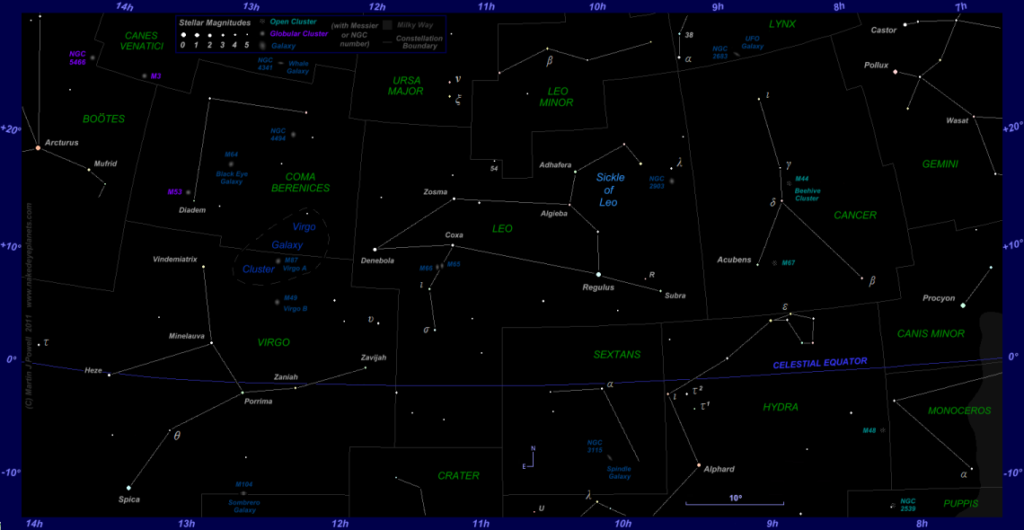
Gods, heroes, and mythical creatures dance across the starry tapestry above, painting it with tales far grander than a mere sight to behold. A fascinating legend of great conflicts, crafty monsters, and supernatural intervention is associated with one such constellation, Cancer. The tale dates back thousands of years. Together, we will explore the myths that have shaped the mysterious identity of Cancer, exploring its swirling nebulas and dim stars.
Clash of the Titans: Hercules vs. the Lernaean Hydra
Our story begins with a legendary hero, Hercules, facing one of his Twelve Labors – slaying the monstrous Lernaean Hydra. This serpent-like beast possessed numerous heads, with the ability to regrow two for each one severed. In this seemingly impossible task, Hercules found an unexpected adversary: a colossal crab sent by Hera, Zeus’ wife and Hercules’ vengeful stepmother.
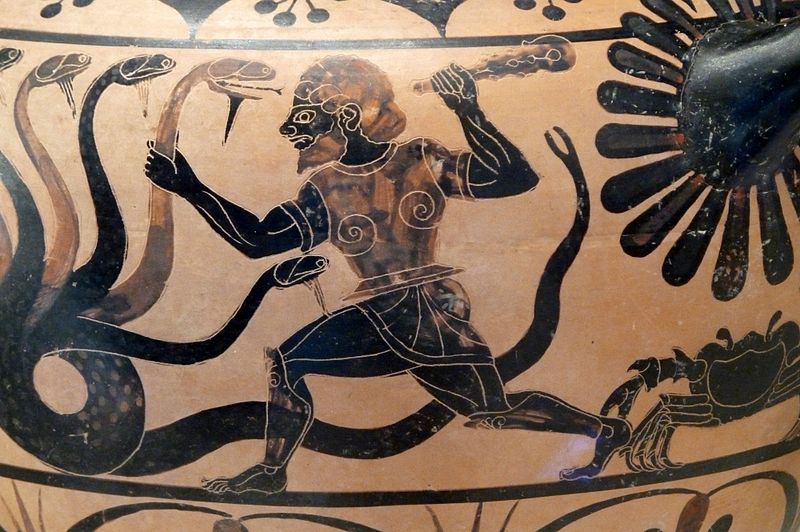
The Crab’s Fateful Pinch
The crab, in some versions of the myth, attempted to distract Hercules by pinching his heel. In others, it sought to aid the Hydra by snapping at the hero’s shield. Regardless of its intentions, the crab met its untimely end. Hercules crushed the crustacean under his mighty foot, silencing its snapping claws forever.
Immortalized in the Heavens
Despite the crab’s failure, Hera, moved by its devotion, decided to honor its sacrifice. With a flick of her divine wrist, she flung the crab’s remains into the celestial realm, granting it a place among the stars. There, Cancer shines eternally, a faint reminder of the epic battle and the creature’s unwavering loyalty.
Beyond the Greek Depiction
While the Greek myth holds the most popular narrative, other cultures have woven their own stories around Cancer. For instance, in Babylonian astronomy, the constellation was associated with a snapping turtle, symbolizing resilience and determination. In Egypt, it was linked to the scarab beetle, a sacred emblem of rebirth and transformation.
A Constellation Steeped in Mythology
The Cancer constellation, therefore, transcends just a celestial pattern. It embodies themes of courage, sacrifice, divine intervention, and the enduring power of myths. As we gaze upon its faint glimmer, we’re not merely looking at stars; we’re witnessing a timeless story etched in the heavens, whispering tales of gods, heroes, and a determined crab, forever immortalized in the cosmic sky.
ALOS READ: How to Find the Best Stargazing Spots Near You: A Complete Guide
How to Find Cancer in the Night Sky
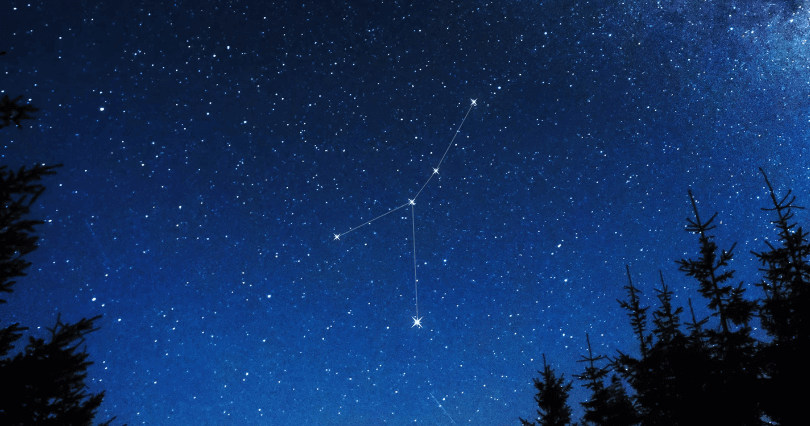
The ancient Greeks may have woven tales of celestial battles and crab claws, but for modern stargazers, the challenge lies not in mythical encounters, but in actually finding the Cancer constellation in the starry expanse. Fear not, intrepid spacefarers! With a few tricks and some celestial know-how, you’ll be charting your course to Cancer in no time.
Best time of year for visibility
Cancer isn’t the brightest constellation, so timing is key. Think of it as the shy guest at a cosmic party, preferring the quieter hours. Head out under the night sky during spring and early summer (February to June) in the Northern Hemisphere, or autumn (August to December) in the Southern Hemisphere. During these months, Cancer appears highest in the evening sky, making it easier to spot.
Charting Your Celestial Course
Just like pirates had their trusty maps, you have star charts and astronomical apps! These celestial guides pinpoint Cancer’s location amongst the constellation crowd. Look for Gemini, the twins, to the west and Leo, the lion, to the east. Cancer sits nestled between them, roughly halfway up in the sky.
Following the Stellar Beacons
While Cancer itself may be faint, its brightest stars offer navigational breadcrumbs. Beta Cancri (Al Tarf), resembling the tip of the crab’s southern claw, shines at a magnitude of 3.5. Acubens, near the center, representing the crab’s heart, boasts a magnitude of 4.2. Finally, Altarf, marking the base of the northern claw, shines at 3.9. Use these celestial beacons as guideposts to identify Cancer’s faint form.
Tools for Enhanced Vision
While the naked eye can glimpse Cancer under ideal conditions, binoculars or a small telescope can reveal its wonders in spectacular detail. The Beehive Cluster, nestled within Cancer’s embrace, transforms from a hazy patch into a dazzling tapestry of stars. Messier objects like M67 and M64 will also emerge from the cosmic shadows, offering celestial treasures for the curious observer.
Scientific Significance
While Cancer may not boast the celestial bling of Orion or the mesmerizing swirl of Andromeda, its contribution to astronomical research extends far beyond its faint glimmer. From hosting exoplanets that could potentially harbor life to offering insights into stellar evolution and galactic mysteries, Cancer whispers secrets to those who listen with the ears of science.
Hosting exoplanets (55 Cancri)
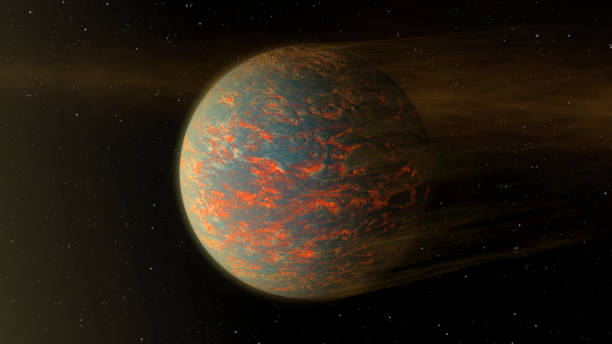
One of Cancer’s most captivating secrets lies in its exoplanetary inhabitants. 55 Cancri, a sun-like star residing within the constellation, boasts at least five confirmed exoplanets, with one potentially habitable. This system, nicknamed “the Solar System’s Cooler, Quieter Cousin,” offers crucial data points for understanding planetary formation and the possibility of life beyond Earth. Studying the composition, orbits, and atmospheres of these exoplanets allows scientists to compare them to our solar system, shedding light on the diversity of planetary habitats and the conditions necessary for life to emerge.
Crucible of Stellar Evolution
Cancer also serves as a celestial laboratory for studying stellar evolution. Within its embrace, astronomers have discovered various types of stars, from youthful blue giants like HD 73525 to the faint remnants of ancient red giants like V4783 Cancri. These diverse celestial inhabitants provide snapshots of different stages in a star’s life cycle, allowing scientists to piece together the story of stellar birth, growth, and eventual death. By studying the composition, luminosity, and lifespan of these stars, researchers gain valuable insights into the complex processes that govern the cosmos.
ALSO READ: Lunar and Martian Rovers: Advancements in Planetary Exploration
Astrological Associations
The Cancer constellation isn’t merely a celestial pattern or a figment of ancient myths. Its influence stretches far beyond the starry sky, weaving itself into the tapestry of human cultures and inspiring artistic interpretations from time immemorial. Let’s embark on a journey to discover how Cancer has resonated with artists, storytellers, and everyday lives across the globe.
Cancer Constellation in Folklore and Literature
Across diverse cultures, Cancer has sparked imaginative storytelling. Across Native American skies, the Cancer constellation transforms, sometimes into a mighty turtle navigating the celestial river, while other times it becomes a powerful bear claw, guiding the constellations on their nightly journey. In Chinese Astrology, the Water Rooster perches proudly within the Cancer constellation, its feathers shimmering with adaptability and intuition. Even Western literature embraces the crab; Lewis Carroll’s “The Hunting of the Snark” features a whimsical lobster quadrille, echoing the playful spirit of the Cancer archetype.
Cancer and the Zodiac: A Personal Touch
For many, Cancer holds a personal significance. Those born under its astrological sign are often associated with strong emotions, deep empathy, and a nurturing spirit. Cancerians are said to be intuitive, protective, and fiercely loyal, characteristics often reflected in artistic portrayals of the crab. Whether through birthstone jewelry adorned with moonstones or creative expressions resonating with their astrological identity, Cancer connects individuals to the cosmos on a personal level.
From Astronomical to Everyday
The influence of Cancer isn’t limited to grand artistic expressions or folklore. The constellation subtly infuses itself into everyday life. Cancer season, during the summer months in the Northern Hemisphere, might inspire vacations by the water, reflecting the constellation’s watery nature. Restaurants or products named after the constellation, like “The Crab Claw Cafe” or “Cancer Comfort Clothing,” offer subtle nods to its celestial influence.
ALSO READ: Are space wormholes real?
Conclusion
We emerge with a kaleidoscope of knowledge and wonder. From its captivating mythical origins to its role in scientific breakthroughs, Cancer has proven itself to be far more than just a faint glimmer in the night sky. One cannot overstate the significance of Cancer’s contribution to astronomical understanding. It harbors exoplanets whispering with the possibility of life, stars singing the saga of stellar evolution, and galactic secrets waiting to be unraveled. Each glimpse through a telescope, each discovery fueled by human ingenuity, adds another brushstroke to the ever-evolving portrait of this constellation.
Yet, Cancer’s appeal transcends the purely scientific. It resonates with our own human experiences, mirroring the cycles of life, death, and rebirth in its celestial dance. The crab, its symbol, reminds us of vulnerability and resilience, of shedding old shells and embracing new beginnings. Gazing upon it, we see ourselves reflected in the cosmos, a part of the grand cosmic tapestry woven with stories, emotions, and the enduring spirit of exploration.
So, the next time you encounter Cancer in the night sky, let it be more than just a constellation. Let it be a window into the Universe’s grand narrative, a testament to human curiosity, and a reminder of the interconnectedness of all things. For within its faint glimmer lies a universe of stories waiting to be told, a symphony of celestial secrets beckoning to be unraveled. This journey through the Cancer constellation might be coming to an end, but the wonder it sparked is just beginning. Now it’s your turn to weave your own thread into its celestial tapestry!
Q&A
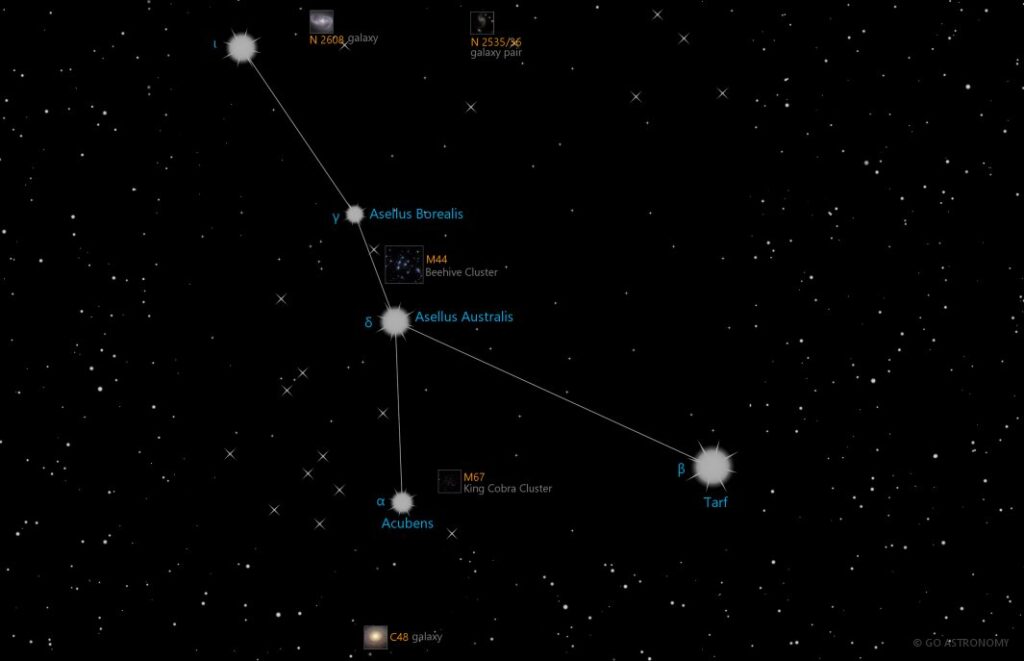
Is Cancer a Zodiac Sign?
Although the 12 zodiac signs derive their names from constellations, Cancer stands out as the only sign whose constellation boundaries do not perfectly align with it. The zodiacal Cancer encompasses a slightly larger area and sits partly within Gemini’s celestial territory. So, if your birthday falls between June 21st and July 22nd, you’re a Cancerian under both astronomical and astrological definitions!
What does Cancer constellation represent?
The Cancer constellation holds a tale from ancient stories about a huge crab Hercules faced during his second challenging task. Hercules had to do these tasks to make up for a bad thing he did. In this part of the story, a goddess named Hera sent the crab to make Hercules’ job even tougher while he was already busy fighting a big water serpent called Hydra. But, Hercules didn’t let it stop him – he defeated the crab using his powerful club.
What Does the Cancer Constellation Look Like?
With its faint stars, Cancer isn’t the most striking constellation. Its crab-like form requires some imagination and a dark sky to discern. The brightest stars, Beta Cancri, Acubens, and Altarf, roughly outline the crab’s body and claws. However, the Beehive Cluster, visible even to the naked eye, serves as a celestial landmark, nestled near the center of Cancer’s form.
How Did Cancer Get Its Name?
The Cancer constellation’s name is steeped in ancient Greek mythology. As Hercules battled the Lernaean Hydra, a giant crab named Carcinos, sent by Hera, tried to hinder him. Despite its valiant efforts, the crab met its demise under Hercules’ mighty foot. To honor its loyalty, Hera immortalized Carcinos by placing its celestial form amongst the stars, forever known as Cancer.
What Are the Stars in Cancer Called?
Cancer boasts a diverse cast of stars, each with its own celestial name and story. Beta Cancri (Al Tarf) translates to “the end” in Arabic, marking the tip of the crab’s southern claw. Acubens, a double star system, signifies the crab’s heart. And Altarf, located at the base of the northern claw, means “the road” in Arabic, perhaps serving as a celestial guide.
